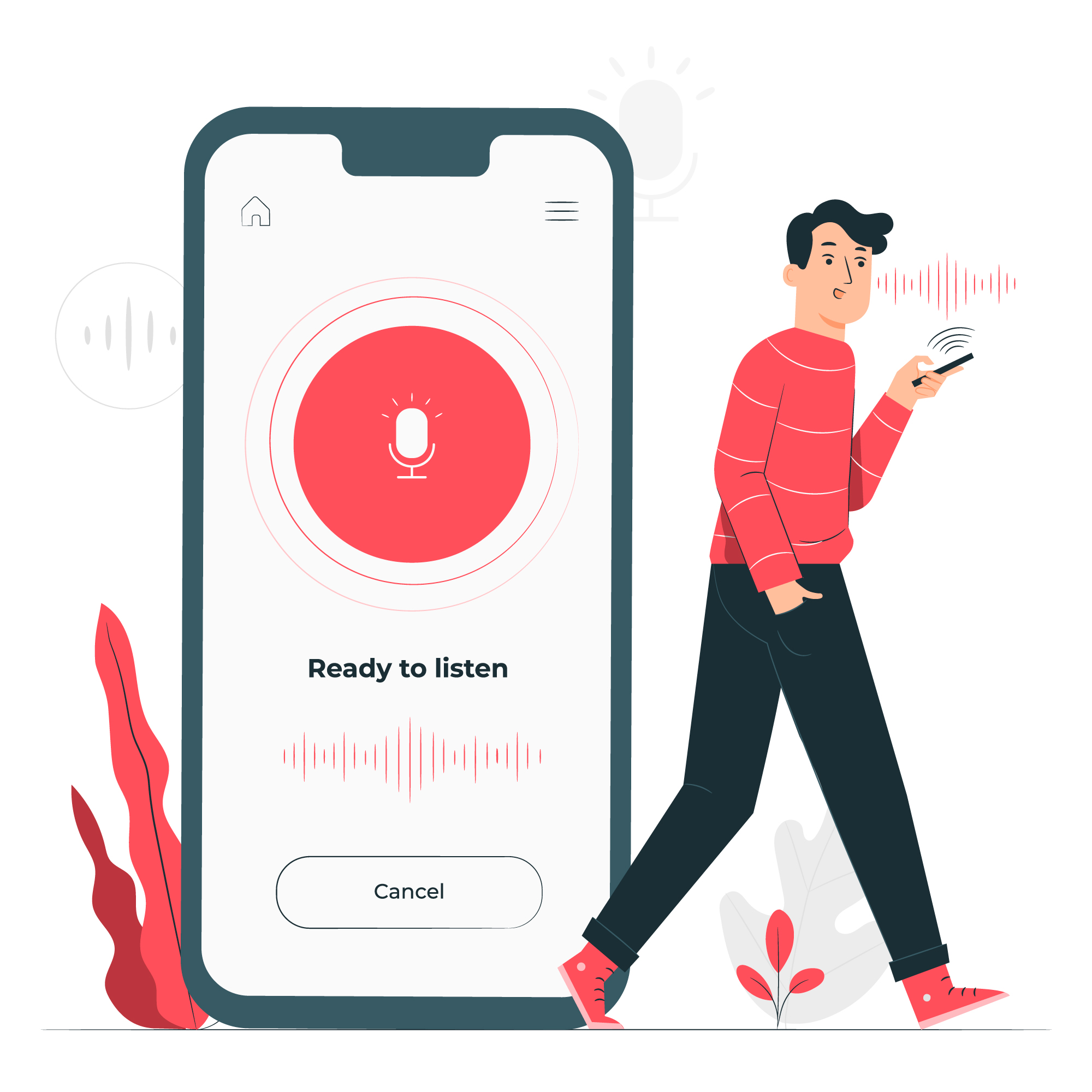Communication today has evolved significantly. With the advent of smartphones and the internet, we now have various methods to convey information, including Voice SMS and traditional texting. Each communication method has unique advantages and disadvantages, influencing how effectively messages are transmitted and received.
This article delves into the pros and cons of Voice SMS compared to traditional texting, drawing insights from recent user surveys, expert opinions, and real-world scenarios.
Pros of voice SMS
Voice SMS offers dynamic and efficient communication, allowing users to convey their thoughts quickly and expressively. The ability to capture tone and emotion provides a more personal touch that traditional texting often lacks.
Speed and convenience
One of the most notable benefits of voice SMS is the speed at which messages can be recorded and sent. Instead of typing out a message, users can simply press a button and dictate their thoughts.
This is particularly advantageous when time is of the essence or when multitasking. For instance, during a busy workday, a person may find it easier to dictate a quick message while walking to a meeting rather than stopping to type.
Clarity of tone
Voice messages convey emotion and intent more effectively than text. Using tone and inflection can add context that plain text often lacks, helping to prevent misunderstandings. Voice communication can enhance clarity and emotional connection for nuanced discussions or sensitive topics.
For example, when delivering good or bad news, the ability to hear a person’s tone can make a significant difference in how the message is received. Listeners can sense urgency, excitement, or concern in a voice message, fostering a more profound connection.
Hands-free capability
Voice SMS allows users to communicate without needing to look at their phones. This feature is particularly beneficial when one is on the go or engaged in other activities.
Imagine a busy parent juggling grocery shopping while trying to convey a quick message to their partner; a voice message can make the communication process much more manageable and less hazardous.
Personal touch
Voice messages can feel more personal than traditional texts. The sound of a person’s voice can create a stronger connection, which is crucial in building relationships, particularly in business contexts where trust is essential.
When communicating with clients or colleagues, sending a voice message can demonstrate care and effort, reinforcing the message’s importance. This personal touch can significantly enhance relationship-building efforts, as clients may feel more valued and connected when they hear a familiar voice.
Cons of voice SMS
Despite its advantages, Voice SMS can present challenges, such as miscommunication and environmental limitations that may hinder effective communication.
Inconvenience in noisy or quiet environments
One significant drawback of Voice SMS is its reliance on appropriate listening environments. Users may find it challenging to listen to voice messages in noisy settings or situations requiring discretion, such as meetings or public places.
For example, in a crowded café or a silent library, playing back a voice message may be inappropriate or difficult. This could hinder effective communication, as users might need to wait until they are in a suitable environment to listen to messages.
Potential for miscommunication
Listeners may misinterpret the pronunciation or context of voice messages. Unlike text, where the recipient can read at their own pace, voice messages can lead to misunderstandings, particularly if the listener does not catch certain phrases or the speaker’s tone is unclear.
For instance, a voice message intended to convey urgency may be misinterpreted as casual if the tone is not forceful, leading to miscommunication and potentially frustrating outcomes.
Time consumption
Recording a voice message often requires pauses and reflections, leading to longer messages than what could be conveyed in a few sentences of text. Users may find listening to long messages filled with filler words and pauses frustrating.
The expectation of a quick response may clash with the reality of needing to listen to lengthy recordings. In contrast, traditional texting allows for concise and direct communication, which can be more efficient and respectful of the recipient’s time.
No written record
Unlike text messages, which create a written log of conversations, voice messages can be harder to document. With a proper record, vital details may be recovered, leading to potential misinterpretations or omissions.
This lack of documentation can pose significant challenges for businesses, as important agreements or instructions may need to be more easily retrievable or verifiable.
Advantages of traditional texting
The advantages of traditional texting include:
Flexibility and control
Text messages offer unmatched flexibility, allowing recipients to read and respond conveniently. This ease of access makes it less intrusive than a voice call, where immediate attention is often required.
High open rates
SMS messages have elevated open rates and can be quickly acknowledged, making them effective for urgent notifications, reminders, or concise updates.
Also, statistics show that text messages have an open rate of around 98%, meaning users are far more likely to see and respond to a text than a voice message that may go unnoticed. This reliability is particularly crucial for businesses sending time-sensitive communications.
Clear documentation
Texting creates a written record of communication, which can be revisited when needed. This feature is particularly beneficial for business communications, ensuring that all parties have access to the same information without the risk of forgetting key details.
For example, agreements made over text can be referenced later to avoid disputes and confusion, providing clarity for all parties involved.
Cost-effectiveness
Traditional texting is often more cost-effective than voice calls, particularly for businesses looking to communicate with a large audience. Sending SMS messages costs less than making multiple phone calls, making it an economical choice for marketing campaigns or customer notifications.
Additionally, many mobile plans include unlimited texting options, allowing users to send and receive messages without worrying about additional charges. This affordability makes texting an attractive option for businesses aiming to maximize communication strategies while minimizing expenses.
Disadvantages of traditional texting
Traditional texting often lacks emotional nuance, can be easily overlooked amid constant notifications, and has character limits that complicate conveying complex ideas.
Lack of emotional nuance
Text messages often lack the personal touch and emotional nuances conveyed through voice. Tone and body language are not in written form, making it easier to misinterpret messages.
For instance, depending on the recipient’s interpretation, a simple “okay” text can be perceived as agreement, indifference, or frustration. This ambiguity can lead to misunderstandings and strained relationships.
Character limits
Traditional SMS messaging may impose character limits, making it challenging to convey complex ideas without resorting to multiple messages. This limitation can lead to misunderstandings if the message is shorter or more precise.
Users may need to send follow-up texts to clarify their points, which can be cumbersome and disrupt the flow of conversation.
Risk of being overlooked
Text messages can easily get lost in the shuffle in a world filled with constant notifications. Essential communications will be missed if the recipient does not regularly check their messages or the text becomes buried.
This oversight can lead to missed opportunities, misunderstandings, or delays in response.
Impersonal nature
Texting can feel impersonal, particularly in sensitive situations where a personal touch is essential. Unlike voice messages or face-to-face conversations, written communication lacks the warmth and emotional depth human voices provide.
For example, conveying significant news like a job offer or a relationship change via text may need to be revised, as it fails to capture the nuances of the moment.
This reliance on written messages can come off as cold or detached, making it challenging to build rapport and trust in personal and professional relationships.
In a professional context, the impersonal nature of texting can create barriers to effective communication. Critical discussions about performance reviews, feedback, or team dynamics often require a more personal touch.
Also, reducing these conversations to text messages can make them feel rushed or insincere, leading to misunderstandings and potential resentment among colleagues.
The absence of vocal tone, facial expressions, and body language further complicates communication, undermining the emotional connections necessary for maintaining strong relationships.
Weighing your communication options
Both Voice SMS and traditional texting have unique strengths and weaknesses. Voice SMS offers speed, clarity, and a personal touch, making it ideal for specific situations.
However, it may only sometimes be convenient or effective, particularly in noisy or quiet environments. On the other hand, traditional texting provides flexibility, clear documentation, and the ability to communicate without requiring immediate attention, but it lacks the emotional depth of voice messages.
Ultimately, the choice between Voice SMS and traditional texting will depend on the context and personal preference. Understanding the pros and cons of each method can help individuals and businesses select the most suitable communication channel for their specific needs.
As communication evolves, it is crucial to adapt and choose the methods that best suit the message conveyed and the relationship between the parties involved. By being mindful of these factors, individuals and organizations can enhance communication effectiveness and foster stronger connections.





